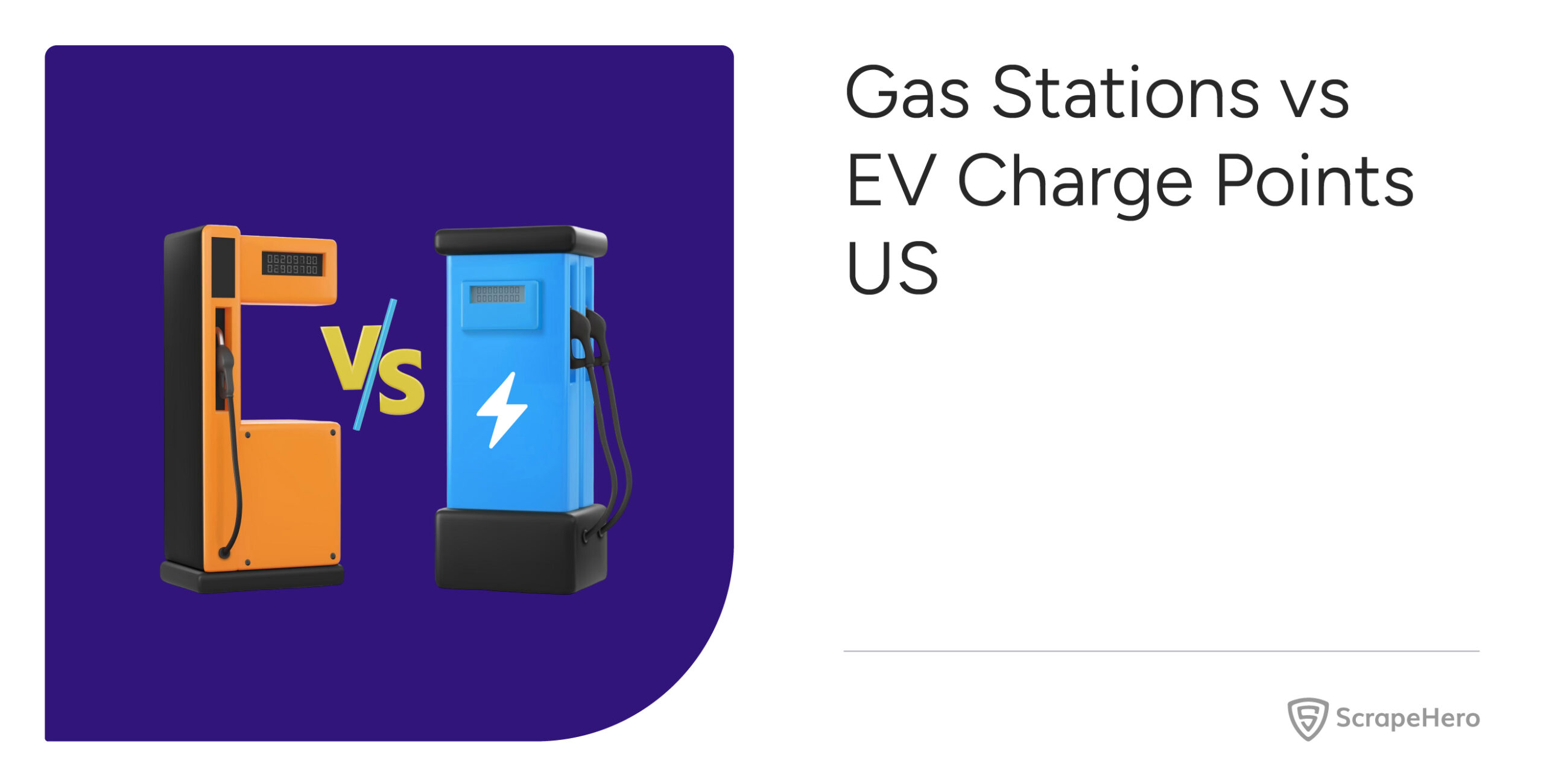This is a comprehensive comparison between the traditional gas station infrastructure and the rapidly evolving EV charging network across the United States. We will analyze their current market presence, revenue, and future trajectories.

Data source: The POI data for this gas stations vs EV charge points in the US report was downloaded from the ScrapeHero DataStore.
Access thousands of global brands and millions of POI location data points ready for instant purchase and download.Power Location Intelligence with Retail Store Location Datasets

The Road Ahead: Gas stations vs EV charge points in the US
The way we power our cars is changing. More and more people are choosing electric vehicles, or EVs. This shift brings up an important question: How does the new network of EV charging stations compare to the gas stations we’ve used for so long?
Want the complete list of all top gas stations in the US with geocoded address, phone number, open hours, etc, for instant download?
In this blog, we will look at the facts. We’ll compare gas stations vs EV charge points in the US by examining their current numbers, how much money they make, and what the future might hold for both.
By the end, you’ll have a clearer picture of how the two fueling systems stack up against each other.
The Reign of Gasoline: A Look at Gas Stations in the US
Gas stations have been a major part of transportation for a very long time, making it easy for people to fuel up their cars almost anywhere. As of 2025, according to xMap, there are around 196,643 gas stations across the United States.
To see where most of these are located, take a look at the bar chart below.
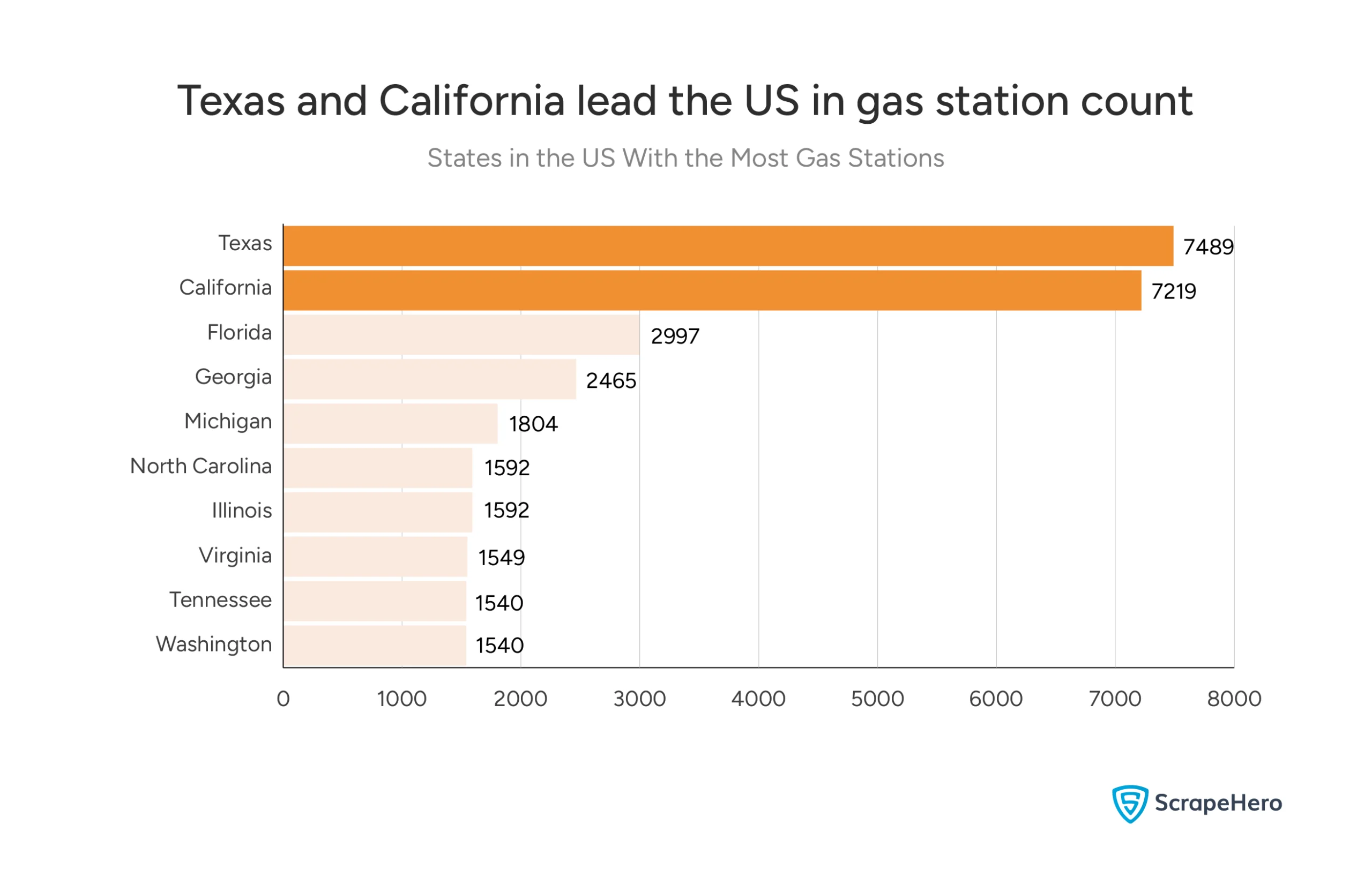
Texas leads the country with over 7,400 gas stations, followed closely by California with more than 7,200.
Other states with a high number of stations include Florida and Georgia, and then Michigan, North Carolina, and Illinois. This widespread network is a key part of the gas station and EV charge station market in the US.
Want to download the top gas stations in Texas, California, and Florida?
The gas station industry is dominated by a few big names. The image below shows the energy companies that have the most locations in the US.
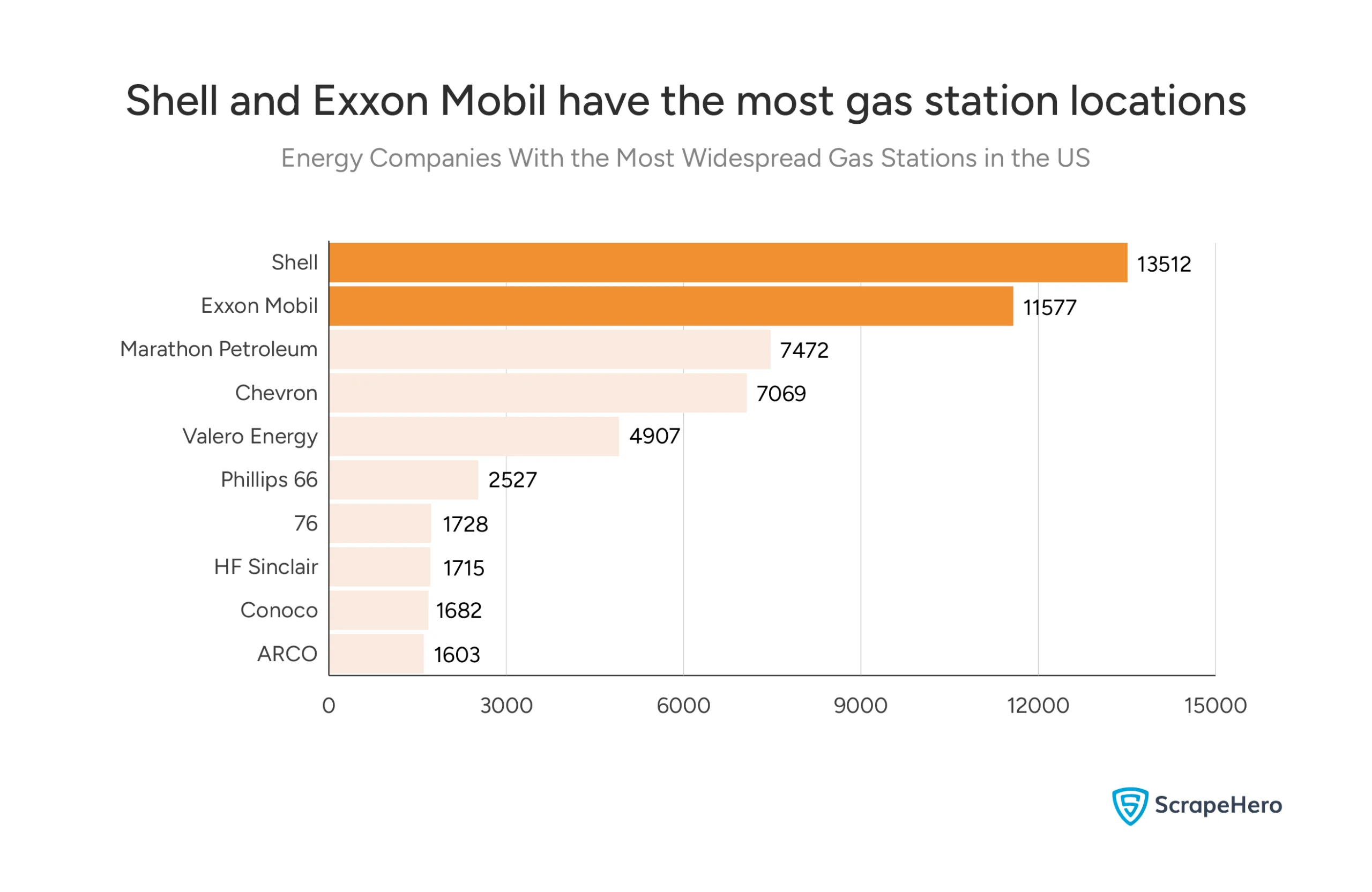
Leading the way are Shell with over 13,500 stations and Exxon Mobil with more than 11,500 stations.
Want to compare the locations of Shell’s gas stations in the US with those of Exxon Mobil’s locations in the US?
Other major players include Marathon Petroleum, Chevron, and Valero Energy, which also have thousands of locations.
Understanding EV Charging Infrastructure in the US
While gas stations have been around for a long time, the EV charging network is growing fast to keep up with the number of new electric cars on the road.
In 2025, there are around 71,868 EV charging stations with 204,195 chargers in the US, according to xMap.
Let’s explore where these chargers are located, what types are available, and which companies are leading the way. This new network is an important part of the modern gas station and EV charge station market in the US.
Where are the EV Chargers Located in the US?
To get a sense of where these stations are, it helps to look at a map.
As you can see in the map below, the distribution of charging stations is not the same everywhere.
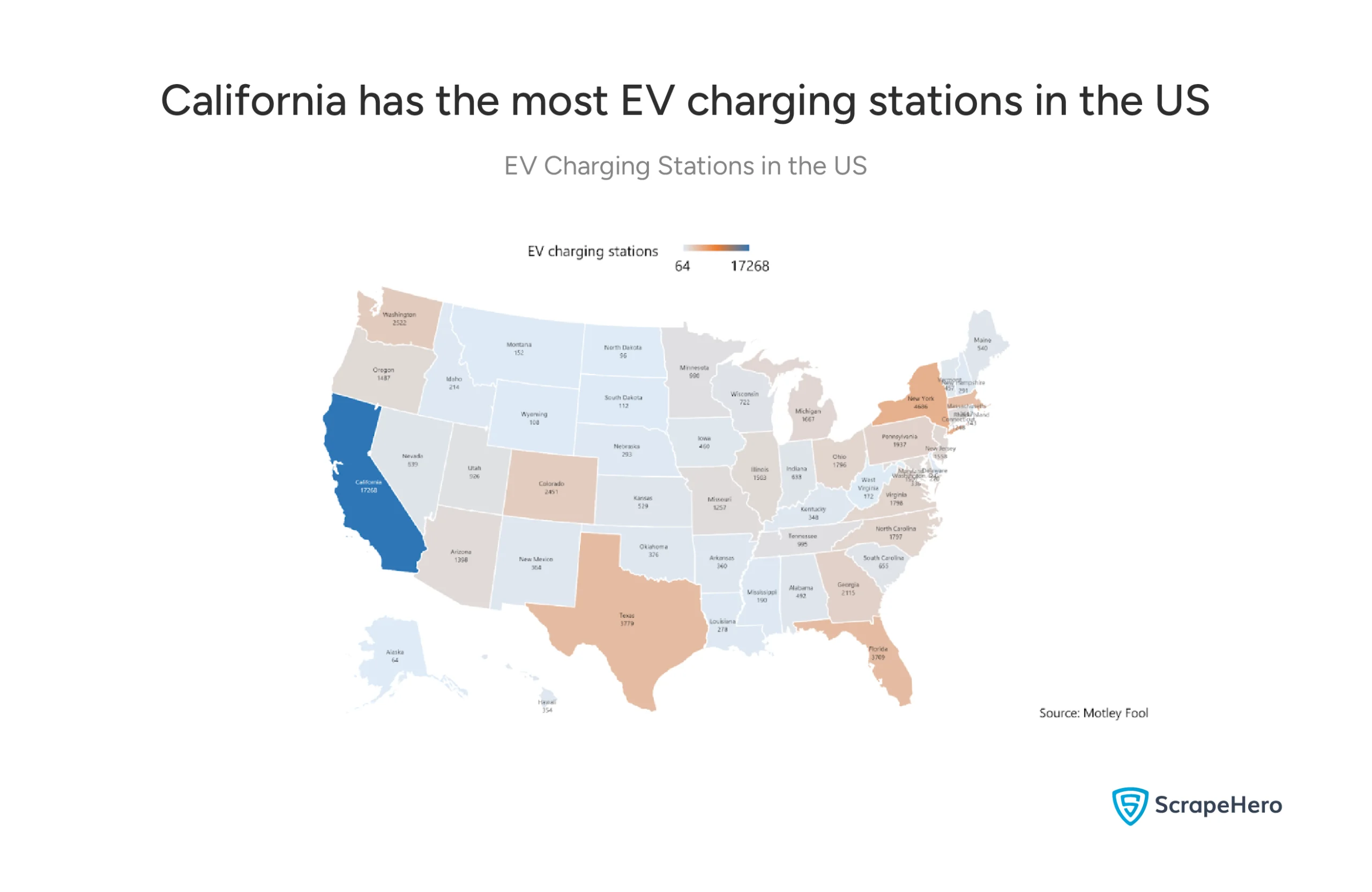
California stands out with the highest number of stations, with 17,268. Other states with a large number of stations include New York (4,686), Texas (3779), Florida (3,709), and Colorado (2,451).
On the other hand, states like Alaska (64) and North Dakota (96) have far fewer. This shows a clear difference when looking at the EV charge stations in the US.
Looking at the number of individual charging ports gives us an even better picture of where the infrastructure is strongest. The map below shows that California again leads the country, with over 51,000 charging ports.
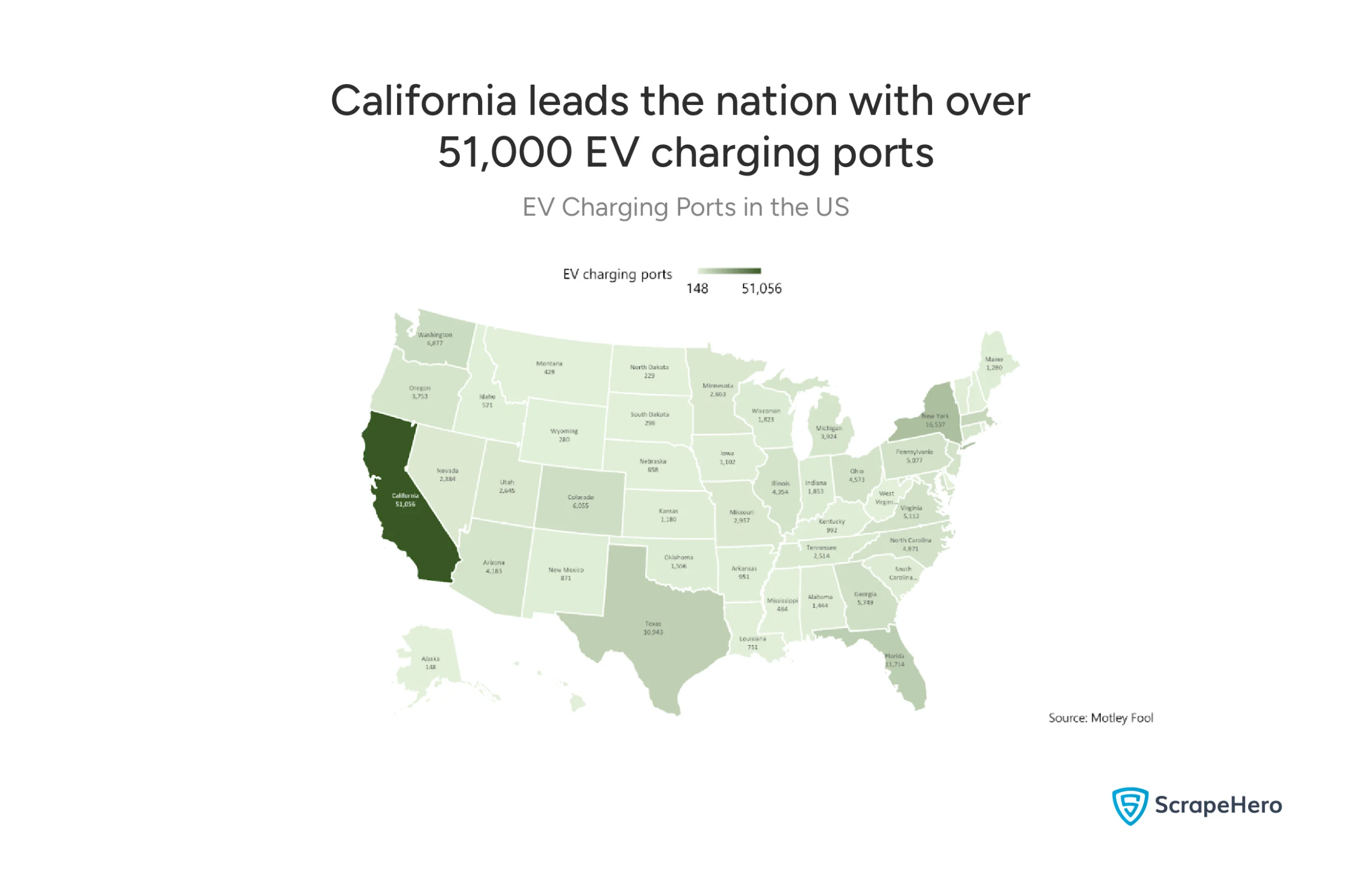
States like New York (10,527), Texas (10,043), and Florida (13,774) also have a high number of ports.
While California has the most charging stations and ports overall, certain cities are leading the way. The graph below highlights the cities with the most charging ports.
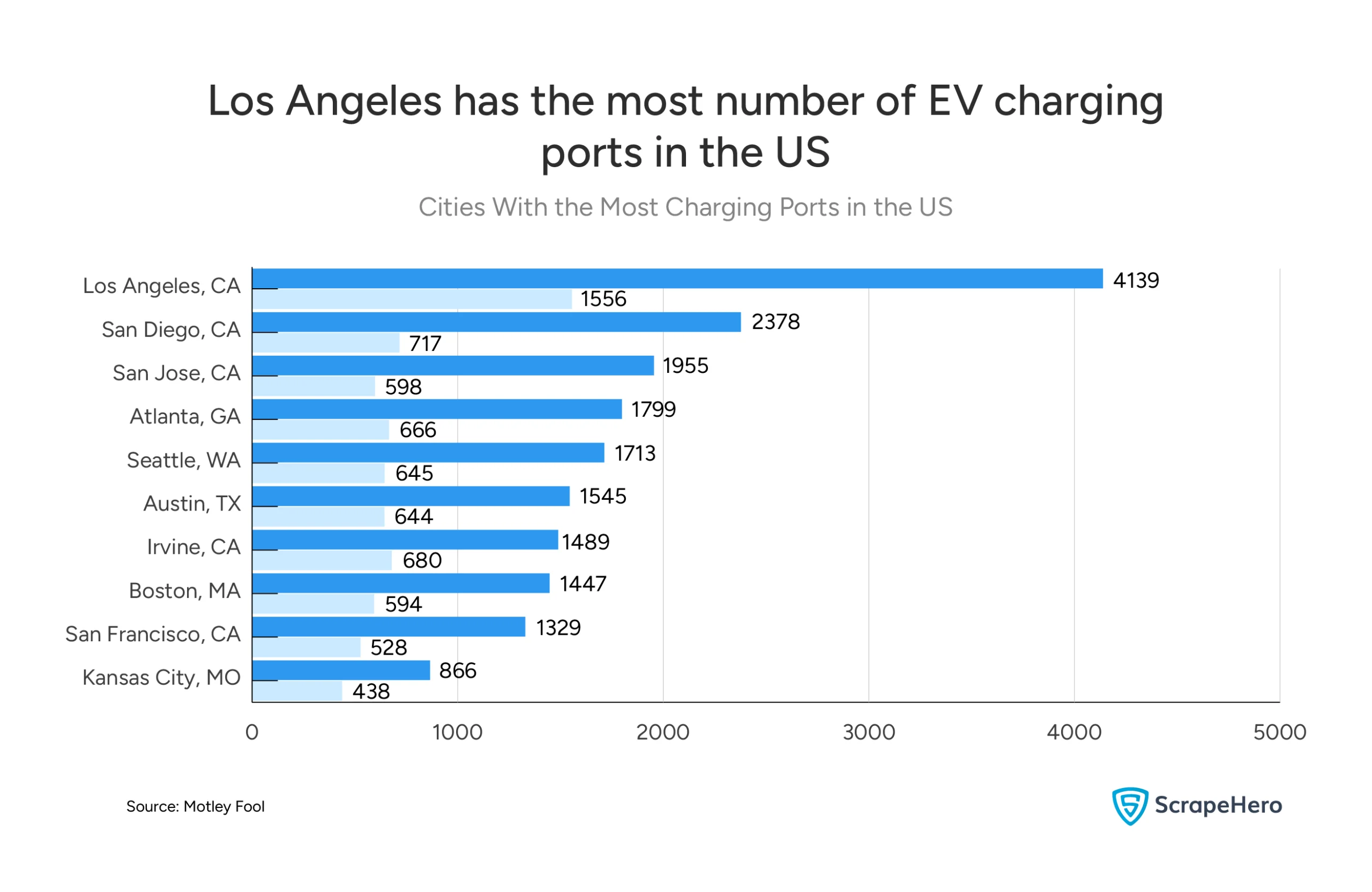
Los Angeles is at the top with over 4,100 ports, followed by San Diego with 2,378.
Other cities like Atlanta (1,799), Seattle (1,713), and Austin (1,545) also have a large number of ports.
This shows how urban areas are a major focus for building the charging network.
Availability of DC Fast Chargers in Different Places
Not all EV chargers are the same. DC Fast chargers are the quickest and are crucial for long road trips, as they can charge an EV in a short amount of time. The pie chart below shows where you are most likely to find these fast chargers.
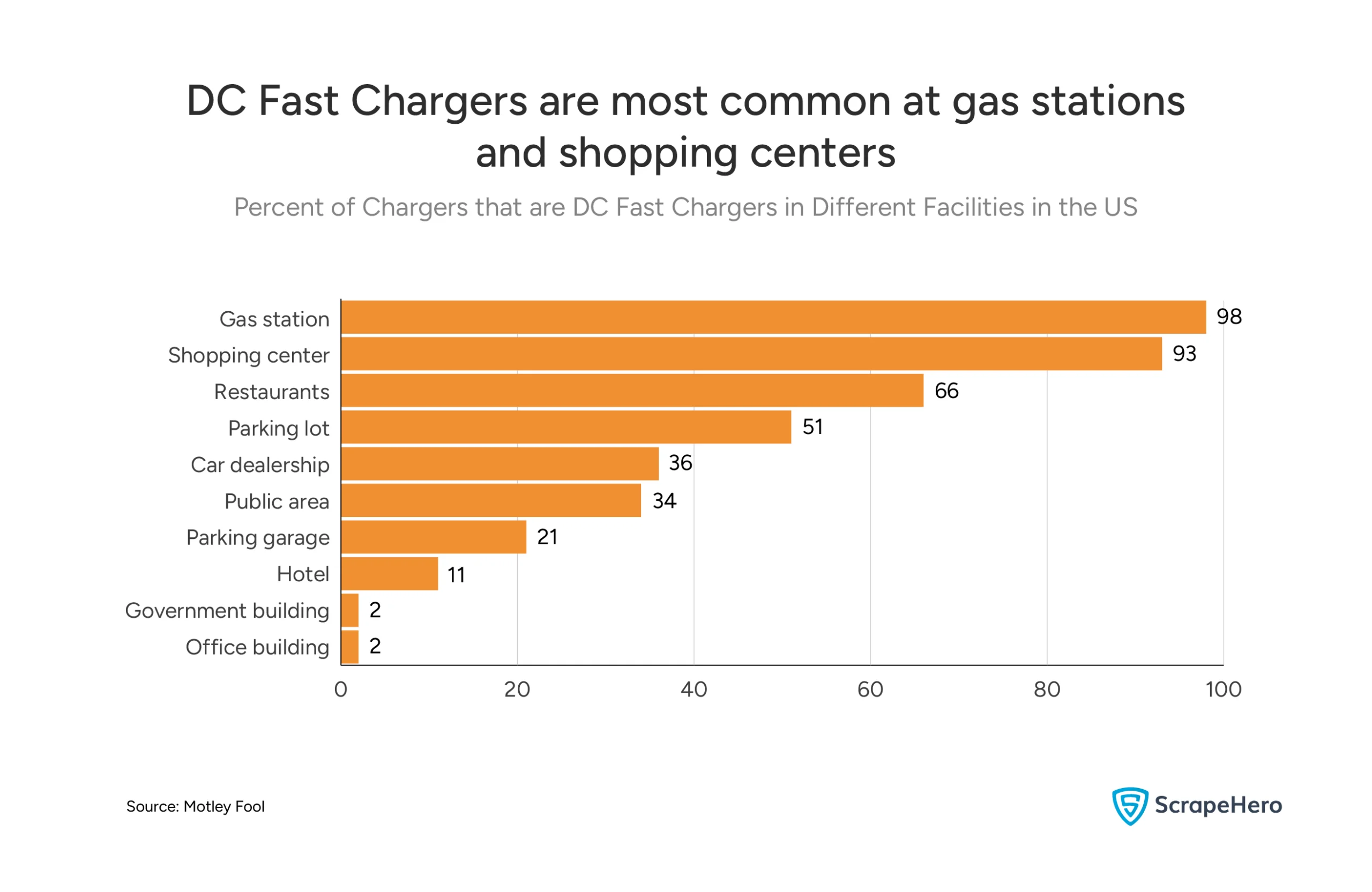
Interestingly, the chart shows that 98% of chargers at gas stations are DC Fast chargers.
This doesn’t mean that 98% of gas stations have them, but rather that almost all of the chargers that are at gas stations are the fastest kind.
Shopping centers also have a high percentage of DC Fast chargers, with 93% of their chargers being this type.
The Main EV Charging Companies in the US
Just like with gas stations, a few big companies lead the way in the EV charging market. The graph below shows the EV charging networks with the most chargers.
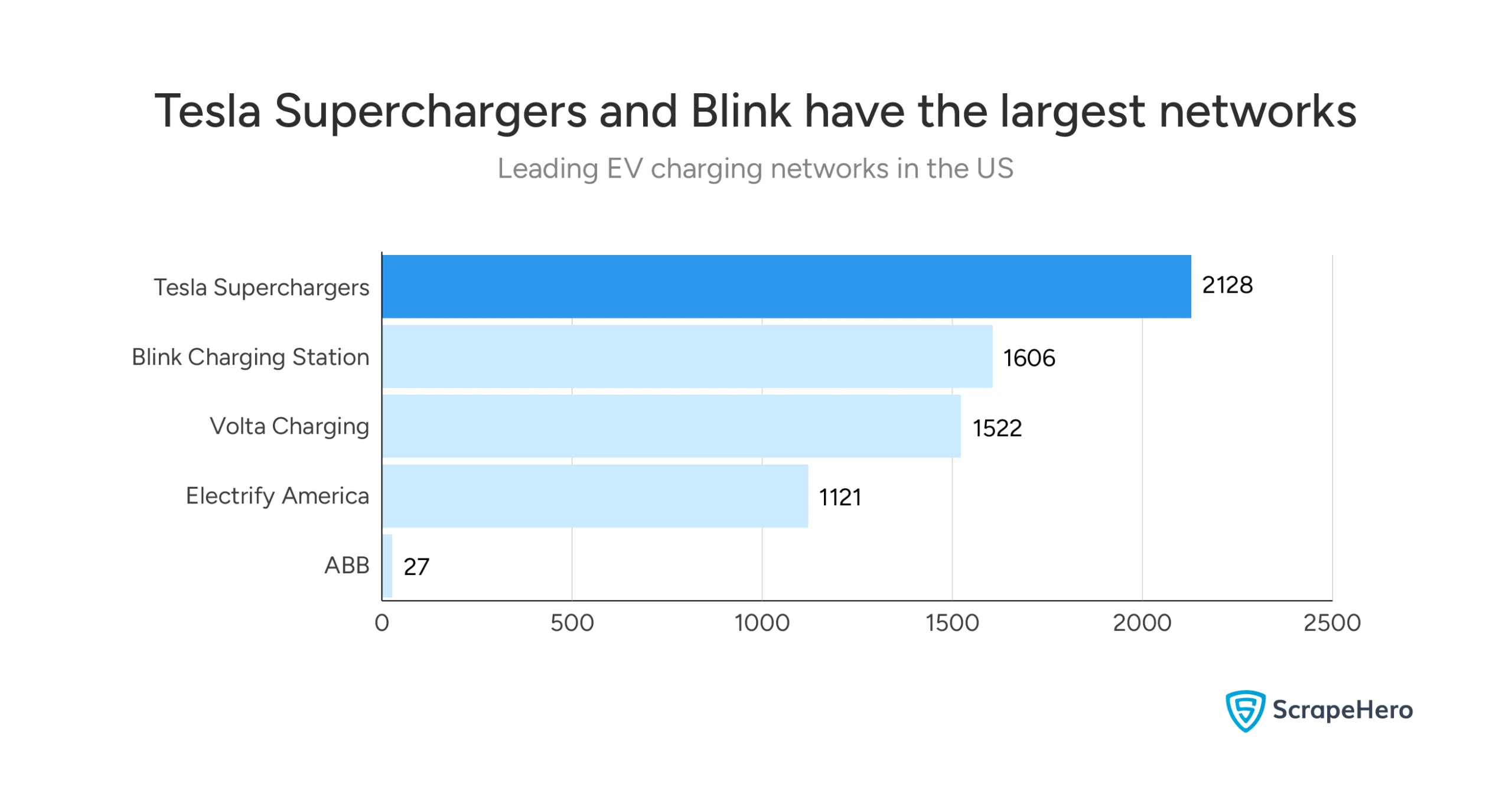
Tesla Superchargers are at the top, with over 2,100 locations. Other major players that make up the EV charger market share by company are Blink Charging Station, Volta Charging, and Electrify America.
Get the geocoded address, stock ticker, etc of all the 2,128 Tesla Supercharger locations in the US for instant download.
This shows that the US EV charging market size is heavily shaped by these top companies.
Economic Currents: Revenue and Market Growth
When we compare gas stations vs EV charge points in the US, the difference in money is huge.
In 2024, gas stations brought in a massive $597.3 billion in total revenue, according to Research and Markets.
During that same year, the EV charging infrastructure market made a much smaller amount, about $5.09 billion.
This big difference shows that the EV charging market is still very new and has a lot of room to grow.
The US EV charging market size is getting bigger every year as more people buy electric cars. Even though the revenue is a fraction of what gas stations make, the growth of the EV charging market is a key part of the changing transportation landscape.
What Did the Analysis of Gas Stations vs EV Charger Points in the US Reveal?
Our analysis of gas stations vs EV charge points in the US shows a clear picture of today and a glimpse into tomorrow.
For now, gas stations still lead the way by a large amount in terms of total numbers and money made. The network of gas stations is vast and has been a key part of our lives for a long time.
However, the EV charging market is growing very quickly. While its revenue is small now, it is getting bigger every year as more people switch to electric cars.
The EV charging network is most dense in certain states and cities like California and Los Angeles, and is led by companies like Tesla and Blink.
As the world moves toward cleaner energy, the number of EV charging stations will continue to grow. This shift means the roles of both fueling networks will keep changing in the years to come.
Want to Do a Similar Analysis?
This comparison, made possible by the POI data downloaded from ScrapeHero Data Store and a few others, gives a comprehensive view of gas stations vs EV charge points in the US.
The ScrapeHero Data Store is the right place to go if you want retail store location data for instant download.
We monitor thousands of brands globally for store openings, closures, parking availability, in-store pickup options, services, subsidiaries, nearest competitor locations, and more.
However, outsourcing with ScrapeHero’s web scraping service is the smarter choice if you require custom data extraction, complex web navigation, or simply want to save time.
We handle everything, data collection, accuracy, and delivery, so you don’t need software, hardware, or scraping expertise. Instead, you can focus on using data for your business, not extracting it.
Connect with ScrapeHero today.
Report by ScrapeHero using publicly available data. This report is independent and not affiliated with any gas stations, EV charge points, or companies in the US.

